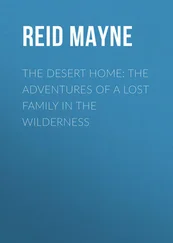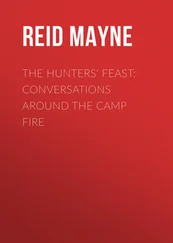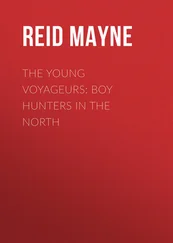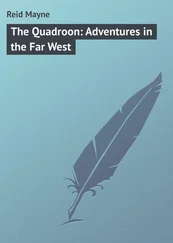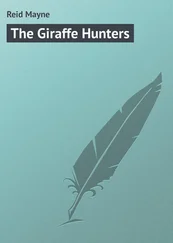Mayne Reid - The Plant Hunters - Adventures Among the Himalaya Mountains
Здесь есть возможность читать онлайн «Mayne Reid - The Plant Hunters - Adventures Among the Himalaya Mountains» — ознакомительный отрывок электронной книги совершенно бесплатно, а после прочтения отрывка купить полную версию. В некоторых случаях можно слушать аудио, скачать через торрент в формате fb2 и присутствует краткое содержание. Жанр: Прочие приключения, foreign_prose, на английском языке. Описание произведения, (предисловие) а так же отзывы посетителей доступны на портале библиотеки ЛибКат.
- Название:The Plant Hunters: Adventures Among the Himalaya Mountains
- Автор:
- Жанр:
- Год:неизвестен
- ISBN:нет данных
- Рейтинг книги:4 / 5. Голосов: 1
-
Избранное:Добавить в избранное
- Отзывы:
-
Ваша оценка:
- 80
- 1
- 2
- 3
- 4
- 5
The Plant Hunters: Adventures Among the Himalaya Mountains: краткое содержание, описание и аннотация
Предлагаем к чтению аннотацию, описание, краткое содержание или предисловие (зависит от того, что написал сам автор книги «The Plant Hunters: Adventures Among the Himalaya Mountains»). Если вы не нашли необходимую информацию о книге — напишите в комментариях, мы постараемся отыскать её.
The Plant Hunters: Adventures Among the Himalaya Mountains — читать онлайн ознакомительный отрывок
Ниже представлен текст книги, разбитый по страницам. Система сохранения места последней прочитанной страницы, позволяет с удобством читать онлайн бесплатно книгу «The Plant Hunters: Adventures Among the Himalaya Mountains», без необходимости каждый раз заново искать на чём Вы остановились. Поставьте закладку, и сможете в любой момент перейти на страницу, на которой закончили чтение.
Интервал:
Закладка:
It now became a matter of serious consideration what they should do under the circumstances. Should they abandon their camp, and move forward? Karl was very desirous of spending a day or two in the neighbourhood. He made no doubt of being able to find several new species of plants there. But with the knowledge of having such a neighbour they would not sleep very soundly. The tiger would, no doubt, return to the camp. He was not likely to stay away from a quarter where he had found such hospitable entertainment – such a good supper. He must have seen the rest of the venison, and would be sure to pay them another visit on the following night. True, they might kindle large fires, and frighten him off from their sleeping place; still, they would be under an unpleasant apprehension; and even during the day they had no confidence that he might not attack them – particularly if they went botanising in the woods. The very places into which their occupation would lead them, would be those in which they were most likely to meet this dreaded neighbour. Perhaps, therefore, it would be best to pack up, and proceed on their journey.
While eating their breakfasts the thing was debated among them. Caspar, full of hunter-spirit, was desirous of having a peep at the tiger anyhow; but Karl was more prudent, if not a little more timid, and thought it was better to “move on.” This was the opinion of the botanist; but he at length gave way to Caspar, and more particularly to Ossaroo, who proposed killing the tiger if they would only remain one night longer upon the ground.
“What! with your bow, Ossaroo?” asked Caspar; “with your poisoned arrows?”
“No, young Sahib,” replied Ossaroo.
“I thought you would have but little chance to kill a great tiger with such weapons. How do you mean to do it then?”
“If Sahib Karl consent to stay till to-morrow, Ossaroo show you – he kill tiger – he catch ’im ’live.”
“Catch him alive! – In a trap? – In a snare?”
“No trapee – no snaree. You see. Ossaroo do what he say – he take tiger ’live.”
Ossaroo had evidently some plan of his own, and the others became curious to know what it was. As the shikarree promised that it was unattended with danger, the botanist consented to remain, and let the trial be made.
Ossaroo now let them into the secret of his plan; and as soon as they had finished eating their breakfasts, all hands set to work to assist him in carrying it into execution.
They proceeded as follows. In the first place, a large number of joints of bamboo were obtained from a neighbouring thicket of these canes. The bark of the banyan was then cut, and the canes inserted in such a manner that the white milky sap ran into them. Each joint was left closed at the bottom, and served as a vessel to collect the juice, and such stems of the fig only were tapped as were young and full of sap. As soon as a sufficient quantity of the fluid had been distilled into the canes, the contents of all were poured into the cooking-pot, and hung over a slow fire. The sap was then stirred – fresh juice being occasionally thrown in – and in a short while the whole attained the toughness and consistency of the best birdlime. It was, in fact, true birdlime – the same that is used by the bird-catchers of India, and quite equal to that manufactured from the holly.
During the time that this was being prepared, Karl and Caspar, by the directions of Ossaroo, had climbed into the trees, and collected an immense quantity of leaves. These leaves were also taken from the banyan figs, and for this purpose they had selected those that grew on the youngest trees and shoots. Each leaf was as large as a tea-plate, and they were covered with a woolly pubescence, peculiar only to the leaves upon the younger trees – for as the banyan grows old its leaves become harder and smoother on the surface.
The fig-leaves having been gathered to his hand, and the birdlime made ready, Ossaroo proceeded to carry out his design.
The two remaining quarters of the venison still hung on the tree. These were permitted to remain – as a bait to the singular trap that Ossaroo was about to set – only that they were raised higher from the ground, in order that the tiger might not too readily snatch them away, and thus defeat the stratagem of the hunter.
The venison having been hung to his liking, Ossaroo now cleared the ground for a large space around – directing his assistants to carry off all the brush and dead wood to a distance from the spot. This was quickly done, and then the shikarree put the finishing stroke to his work. This occupied him for two hours at least, and consisted in anointing all the fig-leaves that had been gathered with a coat of birdlime, and spreading them over the ground, until they covered a space of many yards in circumference. In the centre of this space hung the venison; and no creature could have approached within yards of it without treading upon the smeared leaves. The leaves had been anointed upon both sides, so that they adhered slightly to the grass, and a breeze of wind could not have disarranged them to any great extent.
When all was fixed to their satisfaction, Ossaroo and the others returned to the camp-fire, and ate a hearty dinner. It was already late in the day, for they had been many hours at work, and they had not thought of dining until their arrangements were complete. Nothing more remained to be done, but to await the result of their stratagem.
Chapter Ten.
A Talk about Tigers
I need not describe a tiger. You have seen one, or the picture of one. He is the great striped cat. The large spotted ones are not tigers. They are either jaguars, or panthers, or leopards, or ounces, or cheetahs, or servals. But there is no danger of your mistaking the tiger for any other animal. He is the largest of the feline tribe – the lion alone excepted – and individual tigers have been measured as large as the biggest lion. The shaggy mane that covers the neck and shoulders of an old male lion gives him the appearance of being of greater dimensions than he really is. Skin him and he would not be larger than an old male tiger also divested of his hide.
Like the lion, the tiger varies but little in form or colour. Nature does not sport with these powerful beasts. It is only upon the meaner animals she plays off her eccentricities. The tiger may be seen with the ground-colour of a lighter or deeper yellow, and the stripes or bars more or less black; but the same general appearance is preserved, and the species can always be recognised at a glance.
The range or habitat of the tiger is more limited than that of the lion. The latter exists throughout the whole of Africa, as well as the southern half of Asia; whereas the tiger is found only in the south-eastern countries of Asia, and some of the larger islands of the Indian Archipelago. Westwardly his range does not extend to this side of the Indus river, and how far north in Asia is uncertain. Some naturalists assert that there are tigers in Asia as far north as the Obi River. This would prove the tiger to be not altogether a tropical animal, as he is generally regarded. It is certain that tigers once did inhabit the countries around the Caspian Sea. There lay Hyrcania; and several Roman writers speak of the Hyrcanian tigers. They could not have meant any of the spotted cats, – ounce, panther, or leopard, – for the Romans knew the difference between these and the striped or true tiger. If, then, the tiger was an inhabitant of those trans-Himalayan regions in the days of Augustus, it is possible it still exists there, as we have proofs of its existence in Mongolia and northern China at the present day.
Were we to believe some travellers, we should have the tiger, not only in Africa, but in America. The jaguar is the tiger ( tigre ) of the Spanish Americans; and the panther, leopard, and cheetah, have all done duty as “tigers” in the writings of old travellers in Africa.
Читать дальшеИнтервал:
Закладка:
Похожие книги на «The Plant Hunters: Adventures Among the Himalaya Mountains»
Представляем Вашему вниманию похожие книги на «The Plant Hunters: Adventures Among the Himalaya Mountains» списком для выбора. Мы отобрали схожую по названию и смыслу литературу в надежде предоставить читателям больше вариантов отыскать новые, интересные, ещё непрочитанные произведения.
Обсуждение, отзывы о книге «The Plant Hunters: Adventures Among the Himalaya Mountains» и просто собственные мнения читателей. Оставьте ваши комментарии, напишите, что Вы думаете о произведении, его смысле или главных героях. Укажите что конкретно понравилось, а что нет, и почему Вы так считаете.

